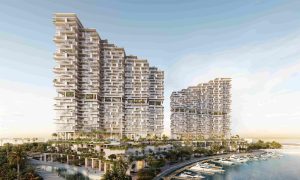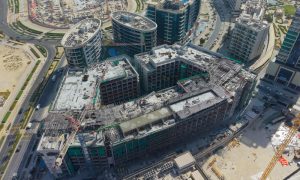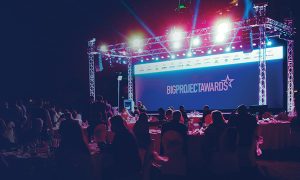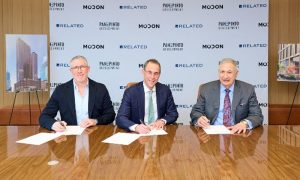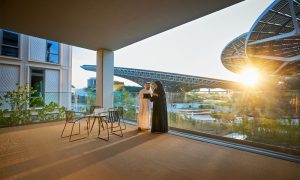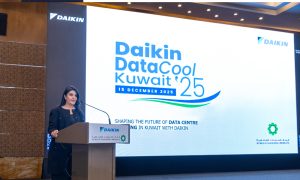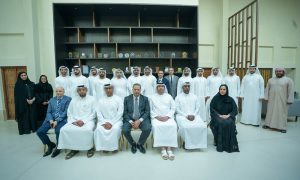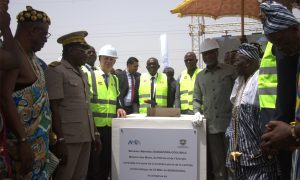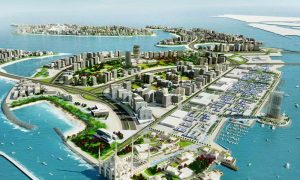ASGC Group Interview: One step ahead of Covid-19
Abdul Aziz Mohamed Bin Shafar, executive director, ASGC Group, talks using strategic thinking and advanced planning to help the construction giant emerge stronger from the pandemic

s we enter into the second half of 2021, the mood around Dubai’s real estate and construction landscape is decidedly more buoyant than it was at the start of the year. Over the last few months, there has been a noticeable gain in momentum as the emirate looks to emerge from a slump sparked by the COVID-19 pandemic.
Thanks to a combination of stimulus packages, visa reforms and strong demand from end-users and investors, developers, analysts, and industry experts predict that the market has bottomed out and that the residential market offers good opportunities to investors ahead of Expo 2020.
This positive sentiment is reflected in the awarding of several contracts for the launch of high-profile residential projects.
With Expo 2020 on the horizon and pavilions being completed, the upswing in market sentiment bodes well for the economic future of Dubai and the UAE, says Abdul Aziz Mohamed Bin Shafer, the vice president and executive director of ASGC, the Dubai-based main contractor.
Speaking exclusively to Big Project ME, Abdul Aziz says that the market is in correction mode post the pandemic, and that he hopes to see a strong market recovery in the second half of 2021, led by Expo 2020 Dubai.
“As you know, the year 2021 has basically been a recovery year from 2020, due to the pandemic.
“There was already a slowdown in the UAE construction market – generally speaking – but the pandemic has exacerbated the situation.
“We are now in a correction mode – the market is correcting and coming back to normal growth. We are seeing opportunities for ASGC in the oil and gas sector, as well as in infrastructure projects, and we are exploring these opportunities in more depth,” he adds, pointing out that the UAE government is investing heavily in the infrastructure of the country, which will be beneficial to the entire supply chain of the construction industry, including the contractors.
Furthermore, he adds that there is an increased emphasis on the development of individual villas and townhouses in the residential real estate sector, due to the high demand from global investors and people preferring to live the UAE, having seen how the country has effectively managed the pandemic crisis.
“They believe that this is a safe place to live, to have a house and to stay. In addition, the new normal of working from home has really supported the high demand for these types of projects.”
Despite the challenges, Abdul Aziz says that ASGC enjoyed a strong start to 2021, with the contractor successfully handing over a number of projects over to clients. These projects include the Opportunity Pavilion, as well as several other country pavilions ahead of the Expo, and the 25hours Hotel in DWTC, which was also completed this year.
Furthermore, ASGC has been awarded a new project by Emaar – The Creek Edge in Dubai Creek Harbour, while, the group also saw its recently launched subsidiary, iBuild Construction, awarded its first project by DAEP, for the development of Cargo Terminal Cooling Rooms at Dubai International Airport.
Abdul Aziz attributes this success to the fact that ASGC’s leadership believes in the maxim that says, ‘in every challenge there is an opportunity’. He pinpoints the company’s strategic leadership, effective business decisions, early implementation of technology, and its highly skilled and agile workforce as being key to it thriving in challenging times.
“ASGC has a really strategic leadership, and they led the early action during the pandemic crisis. We knew that we would reach a point where there would be a real slowdown in terms of projects, and as such, we put the worst-case scenarios (in place),” he explains, adding that the company’s investment in technology has helped it become more efficient and streamlined, which helped it ride out the early shocks of the pandemic.
“From the beginning, we implemented the latest technology in construction to minimise any impacts – that really gave us an advantage over other companies. In fact, I would say that we were at a healthy level pre the pandemic, and now, we’re still in a better position than our competitors.”
This early adoption of technology has also assisted ASGC in reducing the risks of cost overrun, project delays, financial losses, and occupational health and safety, Abdul Aziz says.
Over the past year, technologies like drones, business intelligence tools such as Power BI, Mixed Reality tools, virtual meeting tools, and others have assisted the company in optimising operations and continuing efficient business operations, he continues.
“We have always liked to explore new technologies. As we see it, there is no difference between one contractor and another, except for the type of people working for them, and the kind of technology they adopt. Our early adoption of virtual reality, augmented reality, drones, BIM and other technologies really helped us to advance and stay one step ahead of other contractors.
“This really helped to minimise the cost overruns, while allowing us to have a better view of the project progress. We like to invest in these technologies because we feel that this is the future, and we don’t to just be another ordinary contractor.”
While ASGC is clearly a market leader in adopting construction technology, that does not mean that the rest of the industry is lagging.
Abdul Aziz asserts that with clients and government bodies now mandating the use of BIM, the industry has no choice but to adapt and evolve quickly, if it wants to thrive.
“I feel that the industry is rapidly adopting technology. You now have authorities and clients that are really demanding, while your competitors are already ahead of you, so by default, you need to follow the market trend.
He points out that over the past few years, the construction industry has been rapidly adopting technology, with the most notable achievement being the construction of 3D printed houses in multiple places around the world, adding that ASGC has been investigating 3D printing, along with blockchain, IoT and Artificial Intelligence, amongst other technologies as it strive to keep ahead of the pack.
The construction group has also been focused on the implementation of robotics and digital twins; he adds.
The pandemic has accelerated this increased need for adoption, he adds, with the growing culture of innovation leading directly to the founding of a range of technology start ups in the construction and real estate sector. Furthermore, leading construction companies in the country are invested in the development of these technologies, either via these start-ups, or by themselves, he says.
Looking forward to the next half of the year and beyond, Abdul Aziz says that ASGC expects to see a brighter and more robust 2022, in line with market reports that expect the UAE’s construction industry to grow by an annual average of 3.8% between 2022-2025.
He reveals that the company is expanding its business operations into the infrastructure sector, which is line with the Dubai Master Plan 2040, while its new subsidiary, iBuild Construction will work to deliver construction projects by implementing leading technological advancements.
Beyond the Dubai, he states that ASGC will be diversifying into regions such as Egypt, Northern Africa, the UK, and the other emirates of the UAE over the next few years.
“We’re currently investigating how to be a lightweight construction company outside the UAE –in terms of managing projects. We’re also concentrating more on the oil and gas sector and on the infrastructure sector since it is normally a never-ending investment by the government.”
However, despite the focus on expansion and acquiring new business streams, Abdul Aziz insists that the pandemic has brought about a significant internal change to the company’s philosophy, with the focus now about its people rather than the business.
“Our philosophy before the pandemic was to put the customer first, the employee next, and the stakeholders after that. Now, after the pandemic, we say that it is the employee first, the customer second, and our stakeholders next,” he says, stressing that a happy workforce leads to a healthy work environment and an improvement in the productivity of the entire organisation. We learnt from the pandemic to be more efficient, to stay lean and to cut costs – if our customers were demanding before the crisis, they are now going to be even more demanding when it comes to being cost effective.
But we must put the health of our people, their workmanship and their proficiency first.
“We need to create an environment of working that is happy and friendly,” he warns, insisting that the lessons learnt during the pandemic should continue to be applied, and not forgotten, even as companies adapt to the new normal and continue to thrive and recover.

